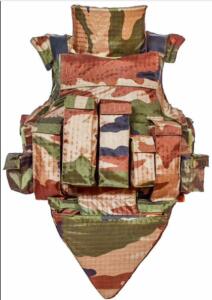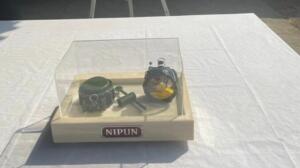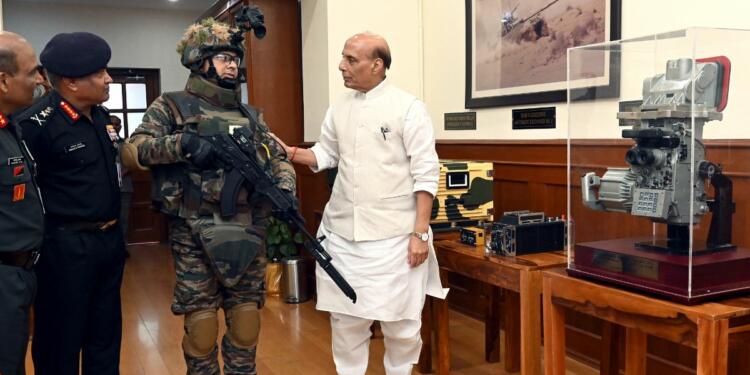I think in my leisure time sitting in a metro or on my balcony, is Nehru to be blamed for everything? Well, no matter what history the left-liberal media fed you with, the facts stand different. Nehru could be attributed with more Himalayan blunders than one can count on fingers, from gifting the UNSC’s permanent seat to China to the vexed issue of Jammu and Kashmir, the partition of Bharat and obviously the 1962 debacle. But, why are we recounting the colossal mistakes of Nehru? Just to assure us of how we have improved.
How India has evolved?
The reason why we just counted the blunders of our first Prime Minister is that today I want to speak about one of his long-hidden mistakes that led to the Indo-China war of 1962. It has been popularised that the tensions in Aksai Chin and Arunachal Pradesh region led to the war. But, the hidden layer to this is China attacked India, after India decided to cut a huge sum from the defence budget.
China attacked India in 1962 just 3 years after the Nehru cabinet had slashed the defence budget by Rs 25 crores. However, today’s India is different. It invests not only to keep the country secure, but also to keep its soldiers secure.
Indian Army gets F-INSAS, Nipun, LCA
On August 16, Defence Minister Rajnath Singh handed over a raft of home-grown military hardware including unmanned aerial systems, quick reaction fighting vehicles, patrol boats and surveillance equipment for boosting its overall combat capability.
Indian Army received F-INSAS (Future Infantry Soldier As a System), anti-personnel mine ‘Nipun’, infantry protected mobility vehicle, rugged and automatic communication system, upgraded sight system for tanks, advanced thermal imagers, and new boats Landing Craft Assault (LCA) in the presence of Army chief General Manoj Pande and Lt General Harpal Singh.
#WATCH Indian Army’s Futuristic Infantry Soldier as a System (F-INSAS) soldier gives a briefing to Defence Minister Rajnath Singh on his new weapon systems and aids including the AK-203 assault rifle#Delhi pic.twitter.com/66aVvIfqHL
— ANI (@ANI) August 16, 2022
How will these benefit the Indian Army
In his remarks, Rajnath Singh exuded confidence that the equipment and systems will enhance the operational preparedness of the Indian Army and increase their efficiency. Thus, the weapons introduced, all of which are indigenous origin and these will enhance the operational capabilities of the Indian Army both on land and water.
F-INSAS
The F-INSAS comprises firepower in the form of the AK-203 Assault Rifle, a ballistic helmet equipped with night vision, goggles and bulletproof jackets.

AK-203

AK-203 takes the legendary AK-47 Rifle a notch higher. The AK-200 series comprises all current trends in small arms development, while retaining the best qualities of the AK-47.
AK-203 is a gas operated magazine-fed, select-fire assault rifle of the Russian origin, having a range of 300 metres. They will be a boost to the infantry units of the Army. AK-203 is extremely versatile with ‘Picatinny rails’ and the operator can install a whole range of tactical equipment like telescopic sight, laser pointer, night vision. The rifle also incorporates “advanced technical solutions” for better accuracy and enhanced barrel lifespan.
The AK-203 rifles will be manufactured in UP’s Amethi as India and Russia have signed a deal regarding the production. Changes to enable ease of use include the folding and adjustable buttstock, windowed and rifled magazine, and a pistol grip that make the AK-203 “more ergonomic”.
Bulletproof Vest

The Bullet-Proof jacket currently used by soldiers weighed almost 20 kg. The bullet proof jacket inducted through F-INSAS is level 4 that extends till neck and protect against weapons like AK-47. The bullet proof jacket is non-flammable that can carry extra load and resist nuclear, chemical and radiological warfare.
New Digital Camo Uniform

To add on the new uniform is lighter weight in which cotton to polyester ratio is 70:30, making it quick to dry and comfortable to wear in hot and humid conditions. The pattern imbibed this time is digital. It was created in collaboration with the National Institute of Fashion Technology (NIFT). The proposal was completed by an eight-person team that included academics and students. The new uniform will have a number of modifications, including a lighter fabric and a digitally disruptive design. The outfit has undergone certain modifications to improve comfort for women as well. The clothing also comprises of flexible water bottles and knee and elbow pads.
Ballistic Helmets

The light weight ballistic helmets too along with the bullet proof jacket are capable of protecting the soldier against 9 mm bullets and ammunition fired from AK-47 rifles.
From a distance of 10 metres, the helmet will able to shield soldiers from 7.62-millimetre mild steel core bullets (32.8 feet). Additionally, it is also capable of decreasing the effects of high-speed burst pieces which come out of explosives.
Army officers indicated that a bullet fired from a 7.62 mm rifle is more lethal than one fired from a 9 mm pistol or sub-machine gun. A 7.62-mm AK-47 assault rifle’s claimed muzzle velocity is 2,350 feet (716 metres) per second, which is nearly twice as fast as the 1,312 feet (399 metres) per second speed of an MP-5 sub-machine gun bullet.
The ballistic helmet is also capable of attaching extra gear, such as in-service radio communication systems, face shields, spotlights, and night vision devices.
Also Read: Indian Army goes futuristic, will now train in Metaverse
Communication Systems

The F-INSAS system also brings in hands-free, secured advanced communications set for real time exchange of information with the command posts and enhanced situational awareness. It also contains a palmtop for GPS, USB 2.0 and jammers to act as a decoy and help friendly soldiers for individual location. The boots have also been made light weight that can be worn for longer duration.
NIPUN Mine

Nipun is anti-personnel mines that will act as the first line of defence against the infiltrators. The Army will induct about 7 lakh such mines.
It was created by the Indian industry and the Pune-based Armament Research and Development Establishment, a DRDO unit.
According to reports, these landmines are more potent than those currently in the army’s inventory because of their sophisticated design and sensors. They can be used in big quantities and are smaller in size.
LCA Boats

LCA (Landing Craft Assault) will be a replacement to the boats carrying defence personnel. LCA is lightweight and has the capacity to carry up to 35 troops. It was developed by the Goa-based Aquarius Ship Yard Limited and reportedly has better launch, speed and capacity to traverse water bodies. The Landing Craft Assault or LCA helps the Army to mobilise its forces more efficiently and deploy them across the terrain in Eastern Ladakh where tensions with China near the Line of Actual Control (LAC) have kept the forces on their toes.
The induction simply makes it clear that no matter where the threat is from, whether it comes from the western deserts or high-altitude areas, the Indian Army is well equipped to face it. The induction is also in accordance with Narendra Modi’s dream of self reliance as these products will be manufactured within the territorial boundaries of India.
A battle can be fought on the basis of courage, but to fight a war, battalion needs supplies in the form of arms, ammunitions, grains and the Modi government understands this well. The latest induction stands in deposition for the same.
Support TFI:
Support us to strengthen the ‘Right’ ideology of cultural nationalism by purchasing the best quality garments from TFI-STORE.COM































